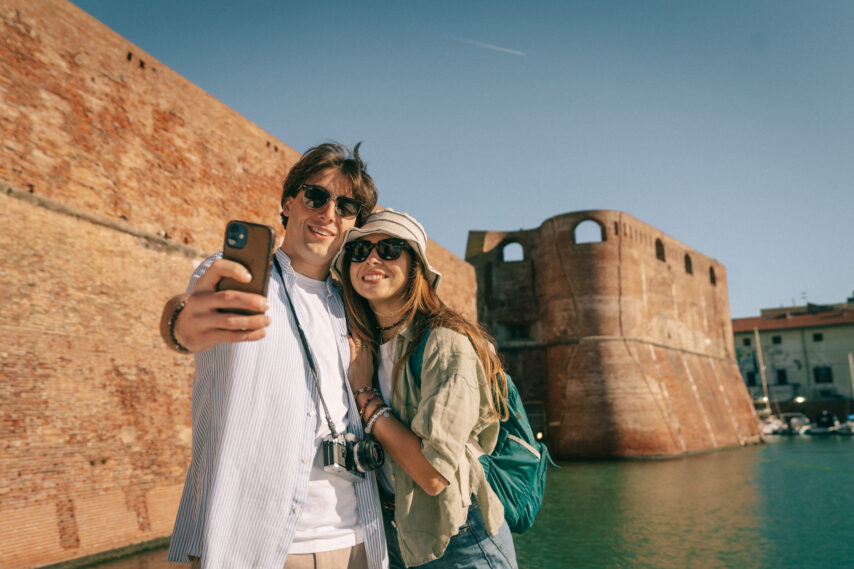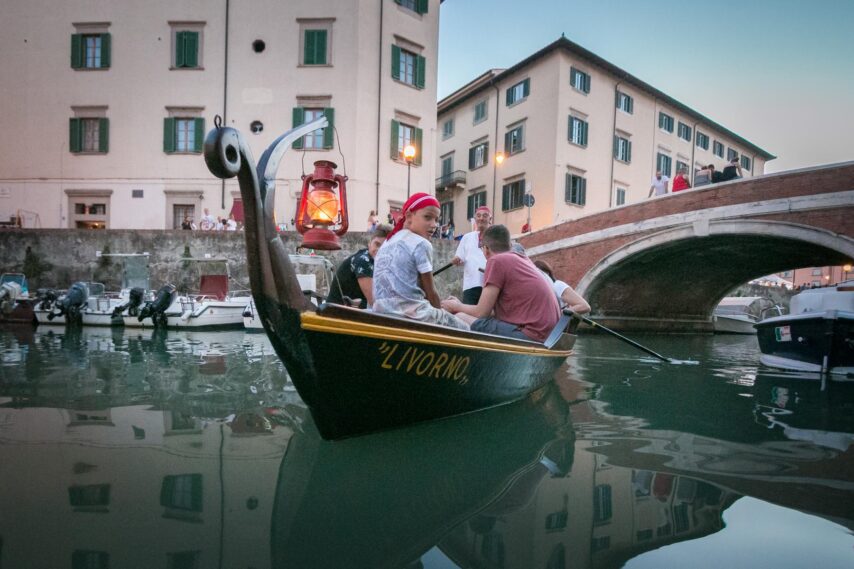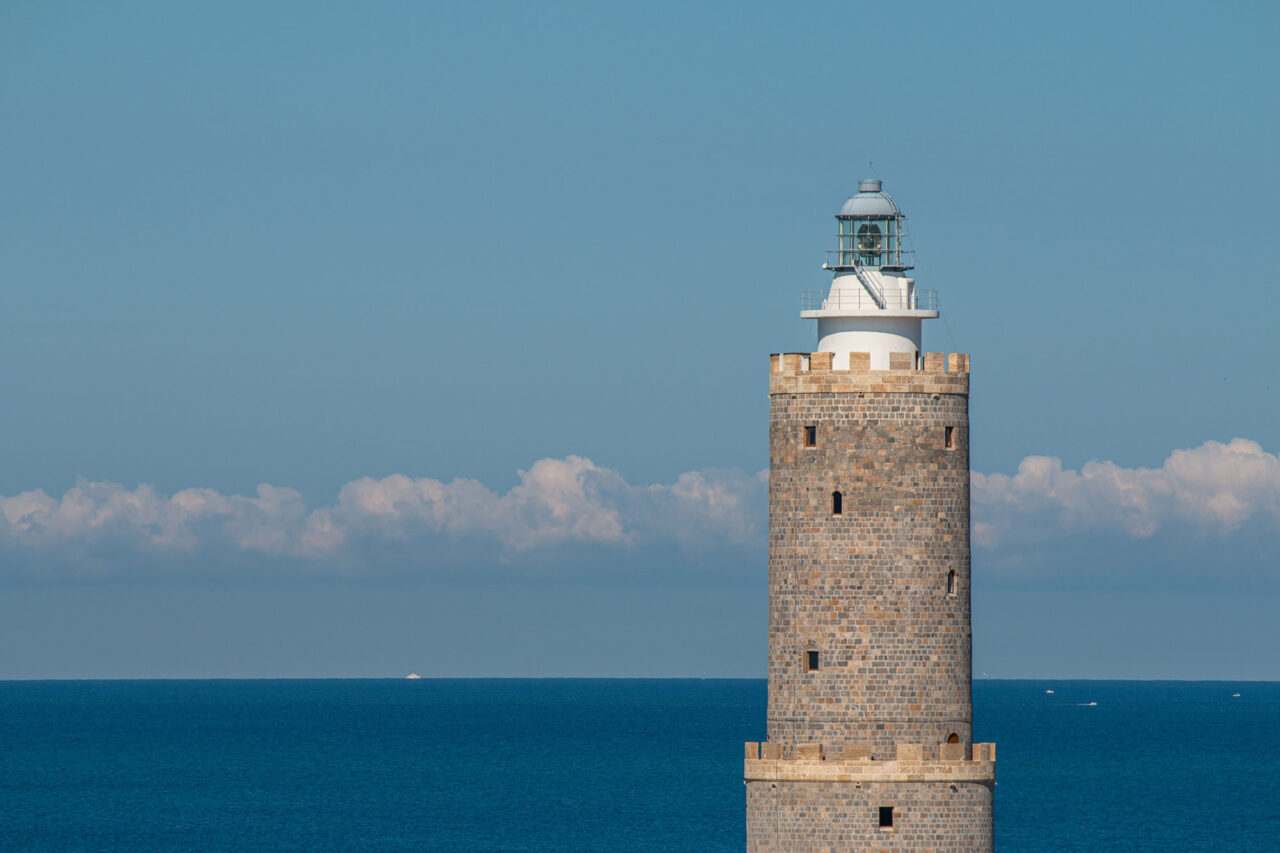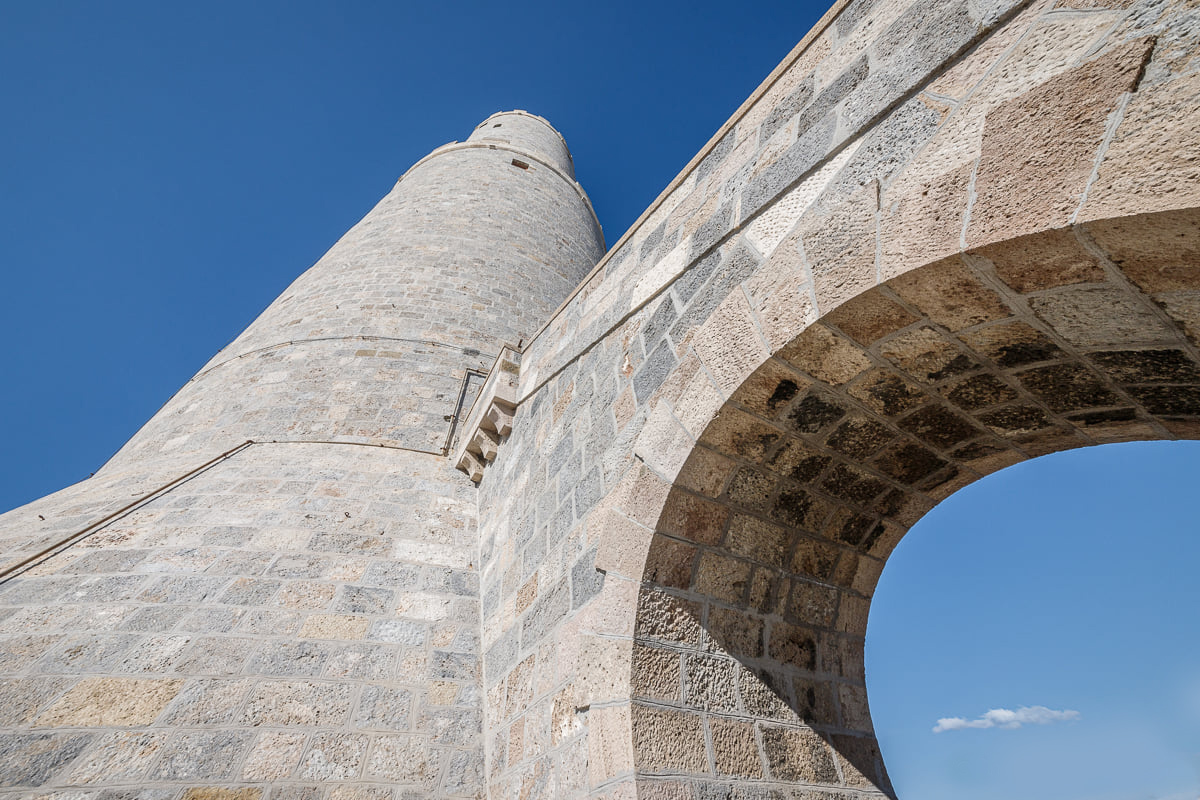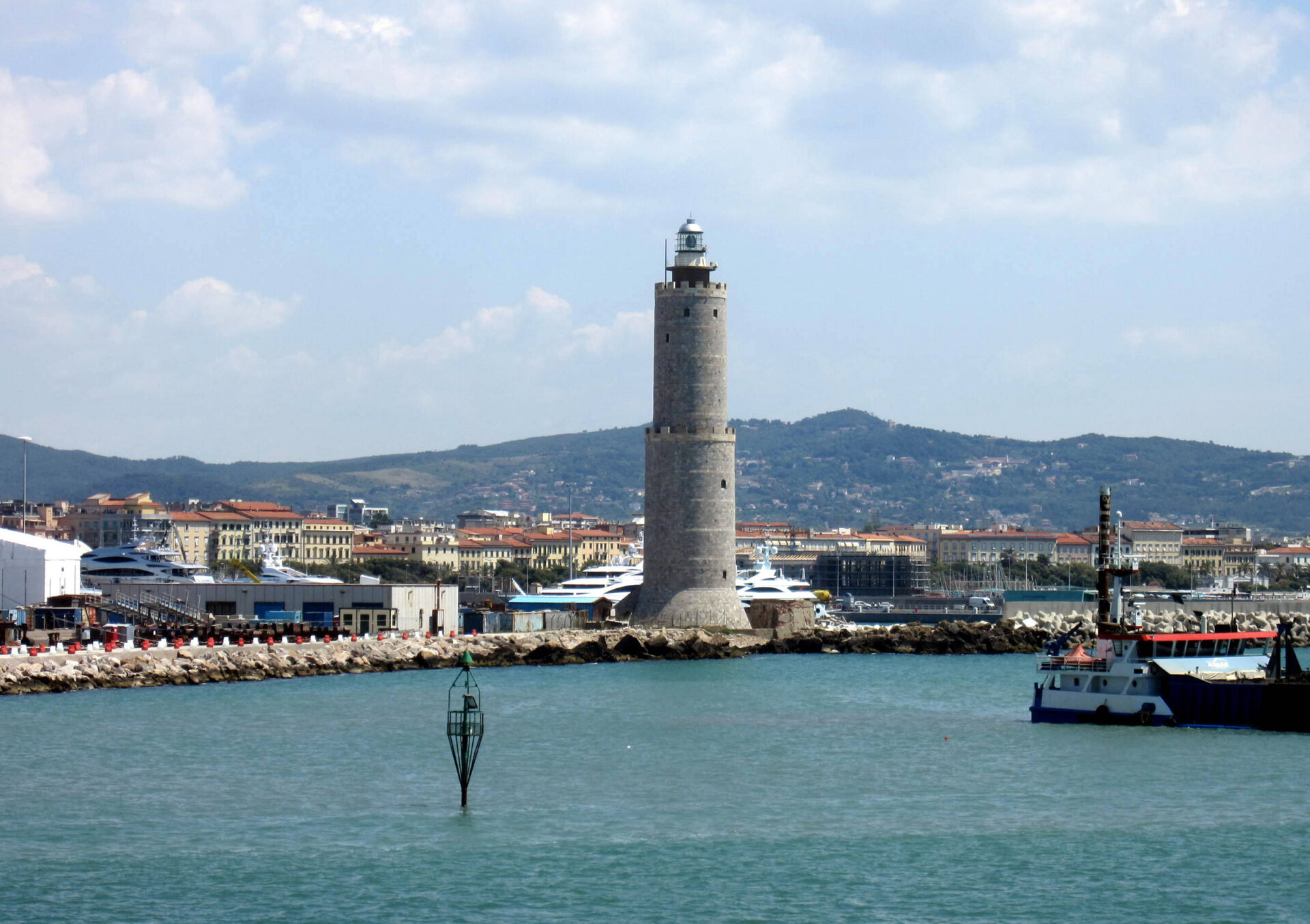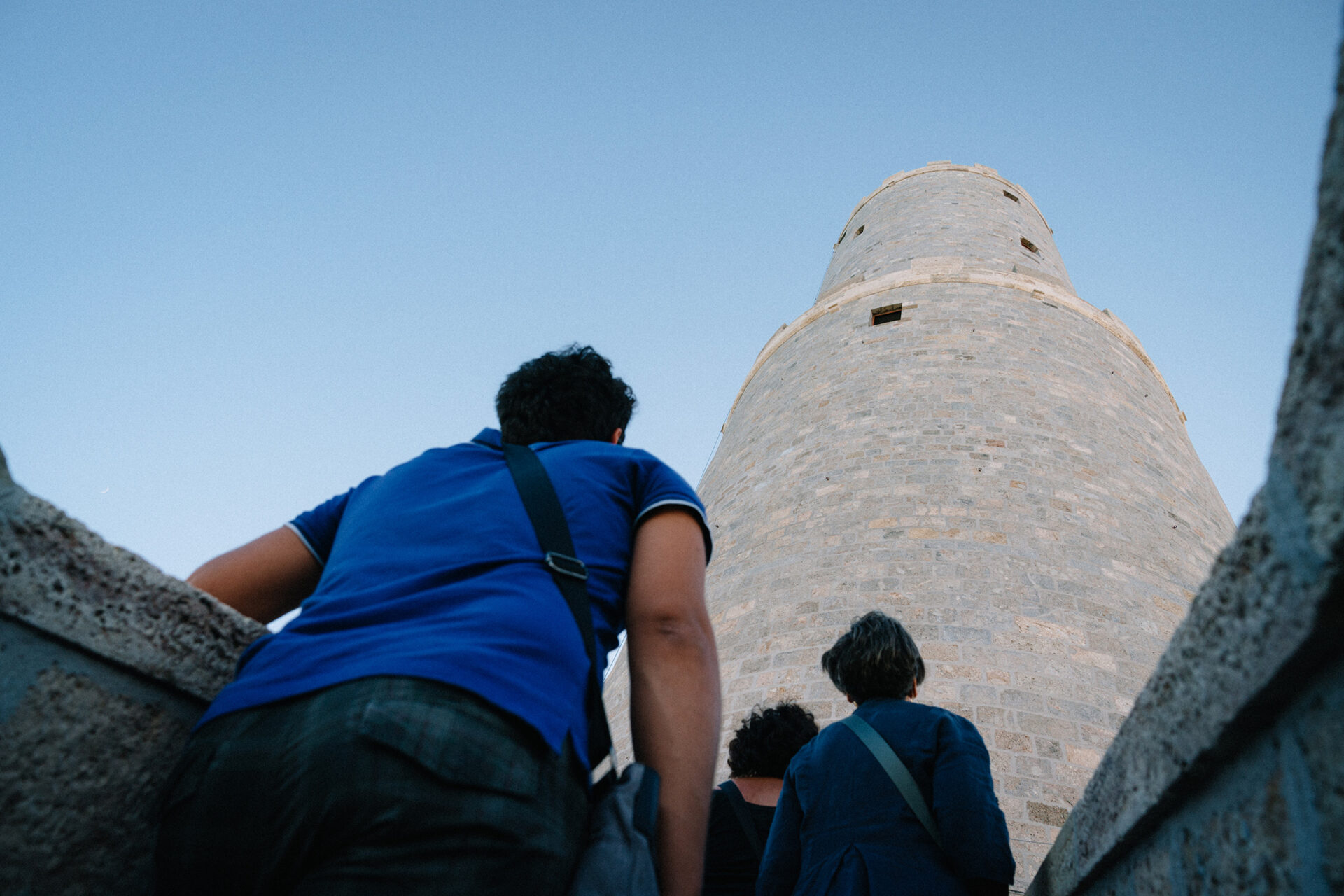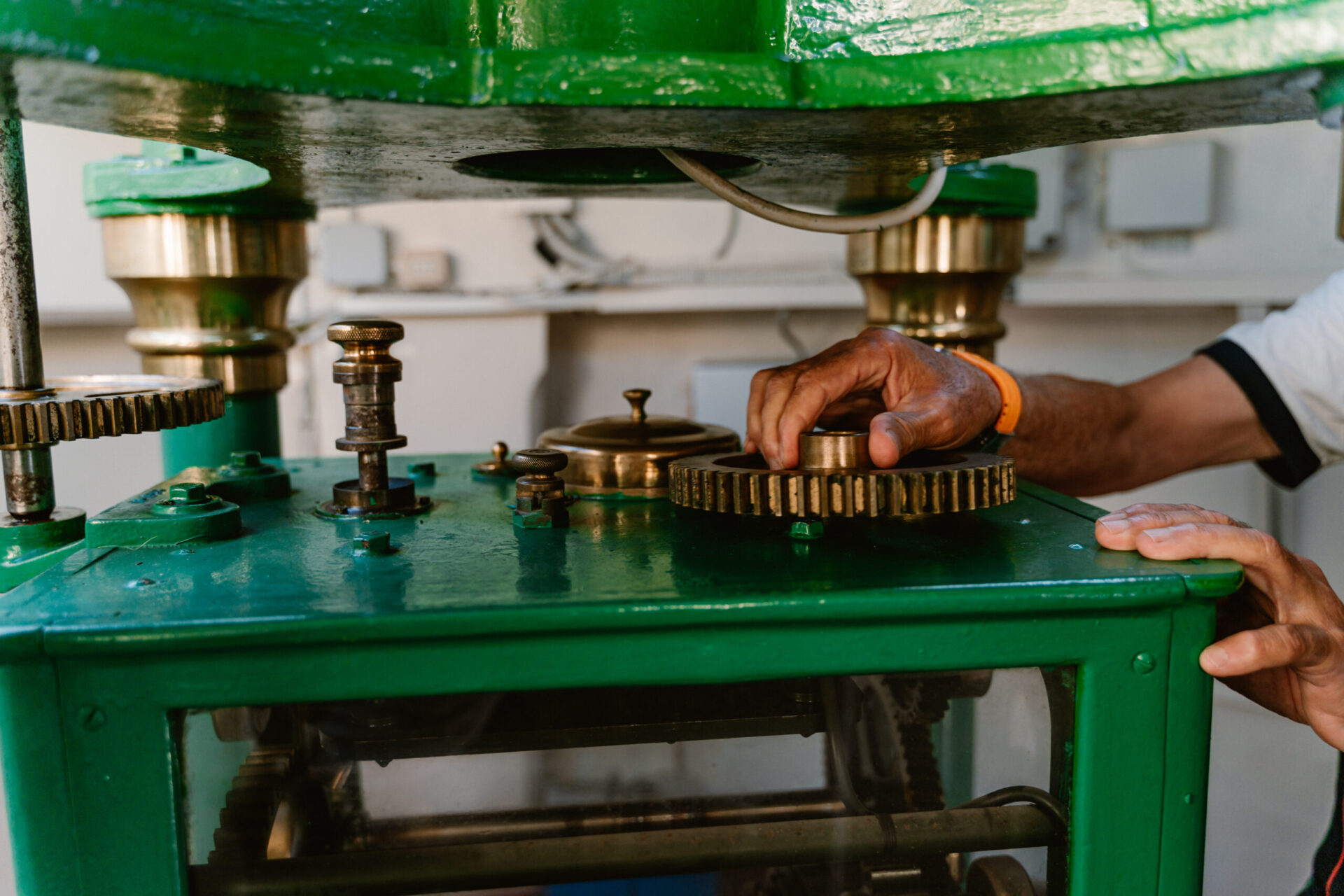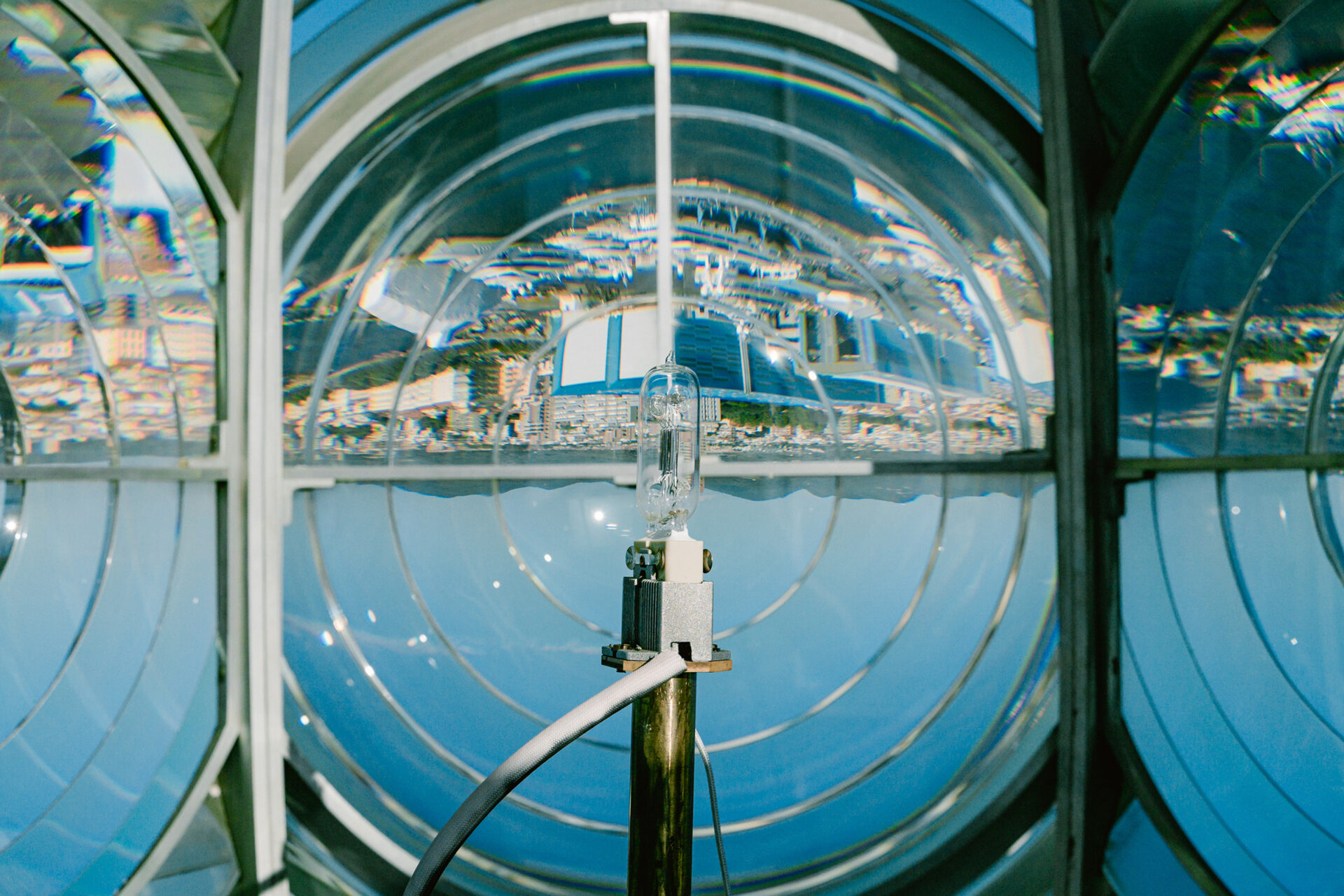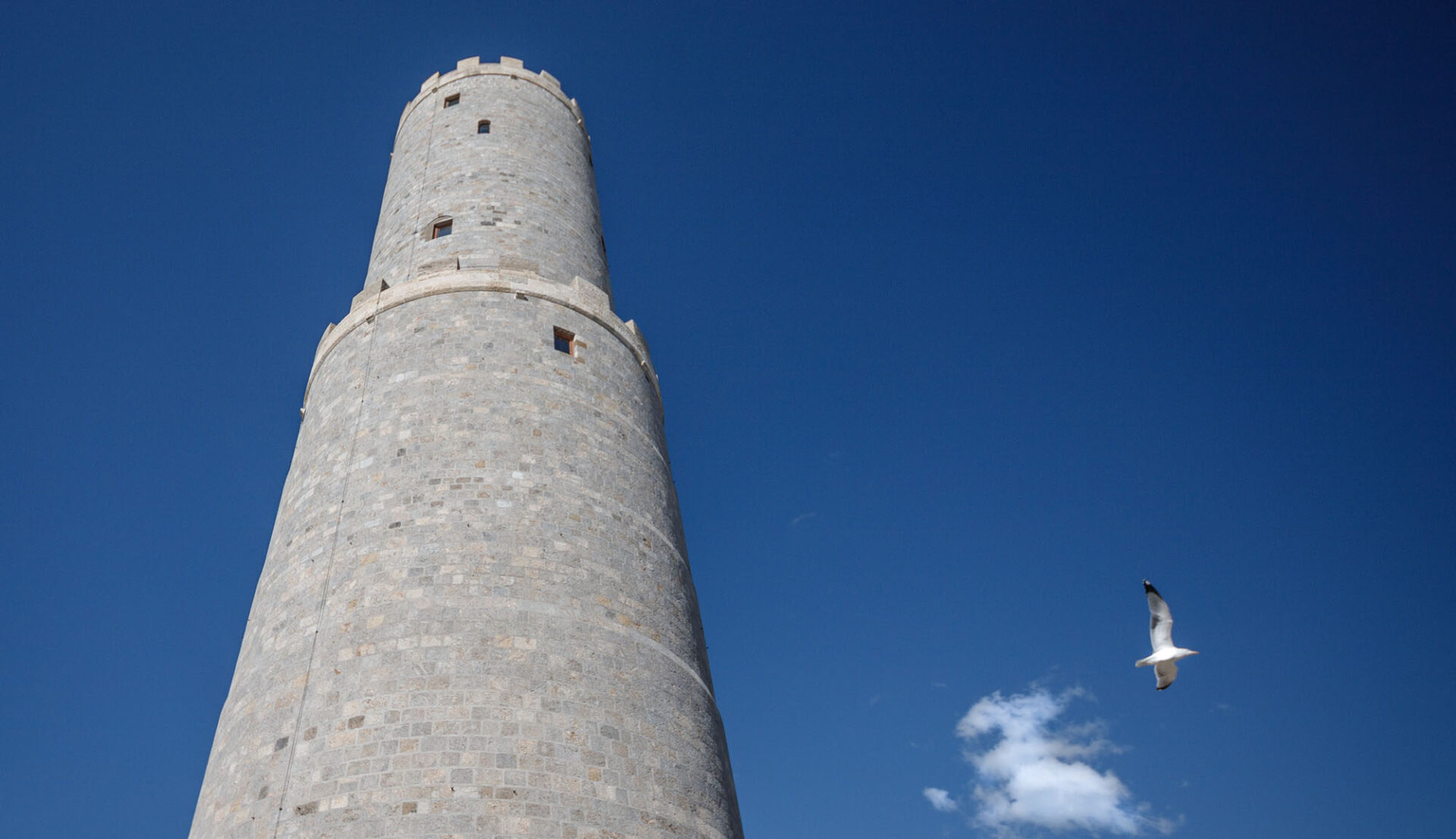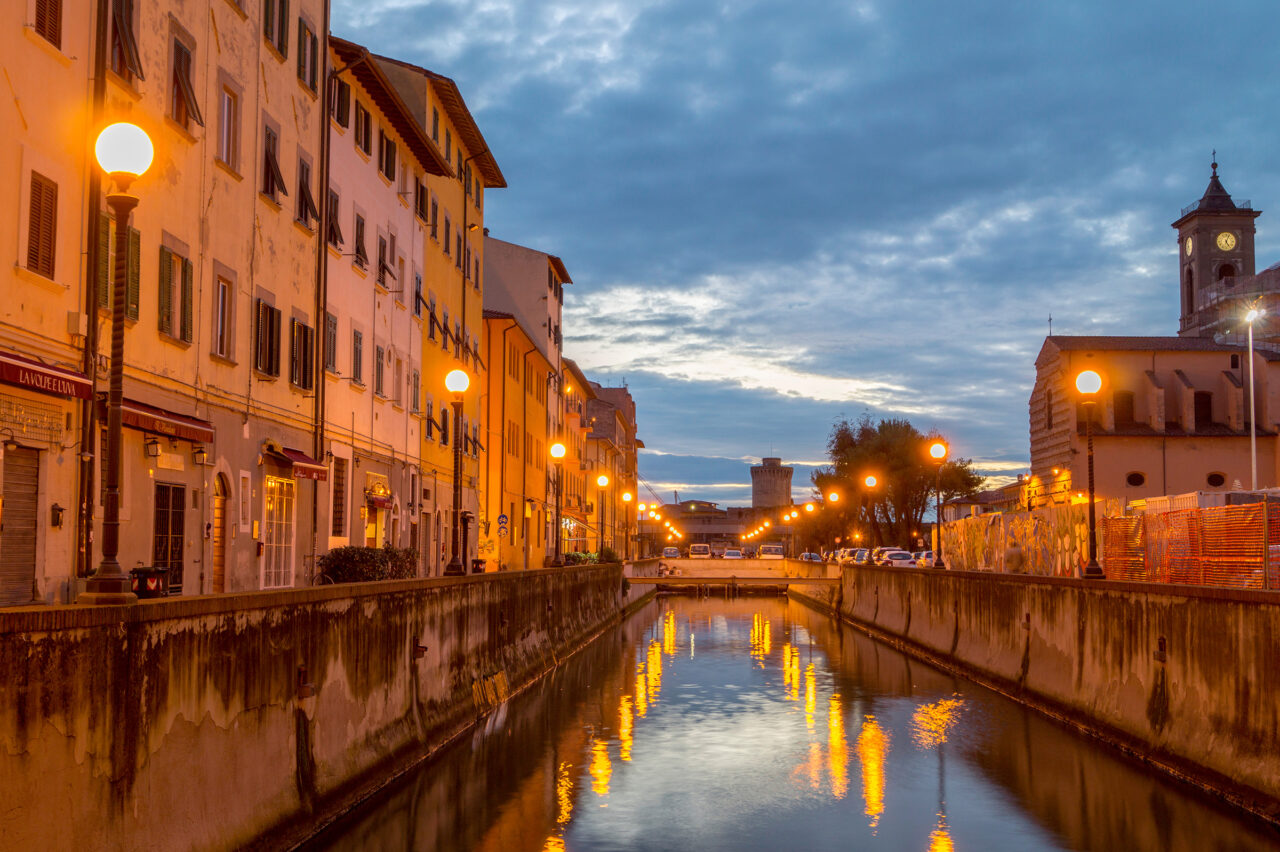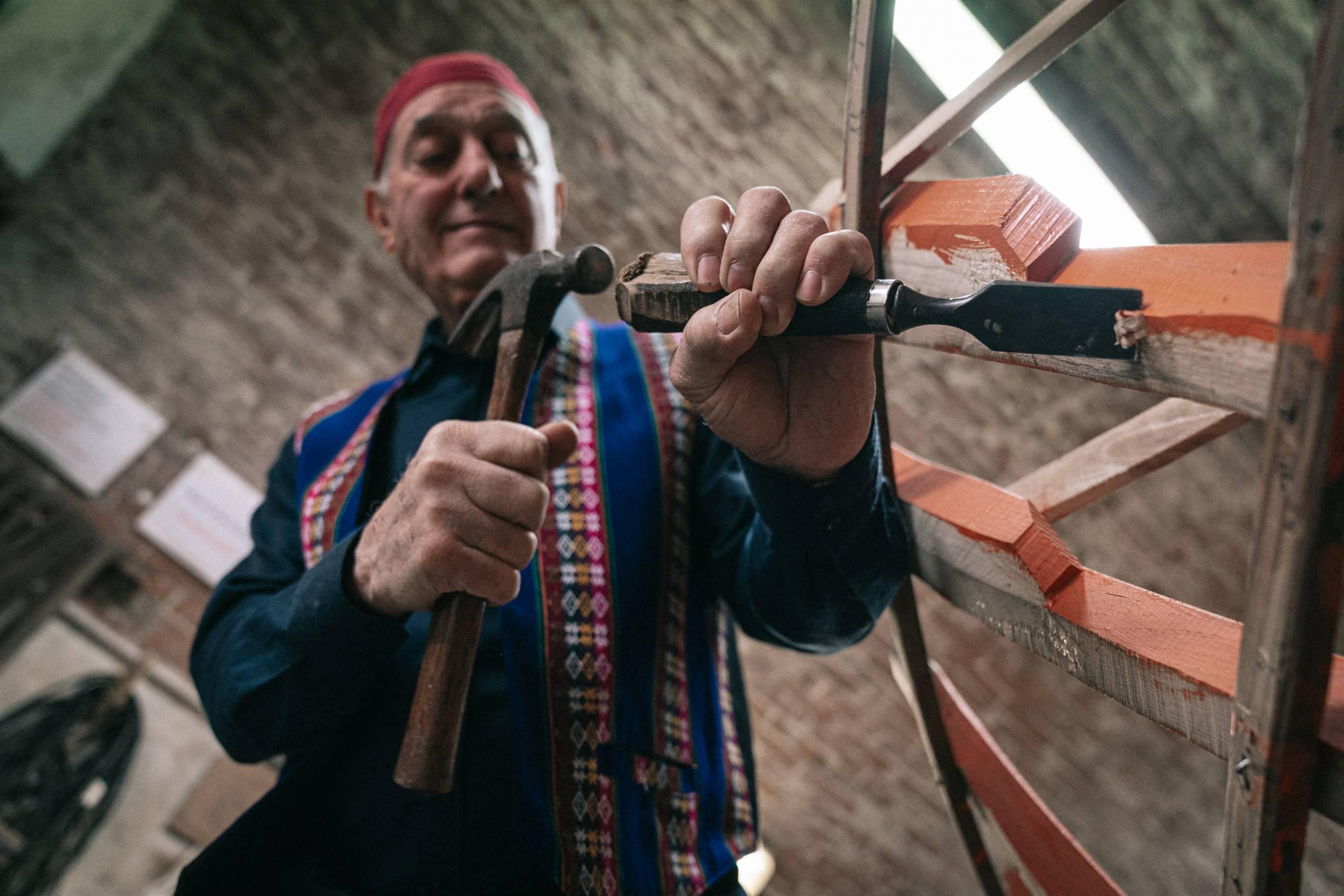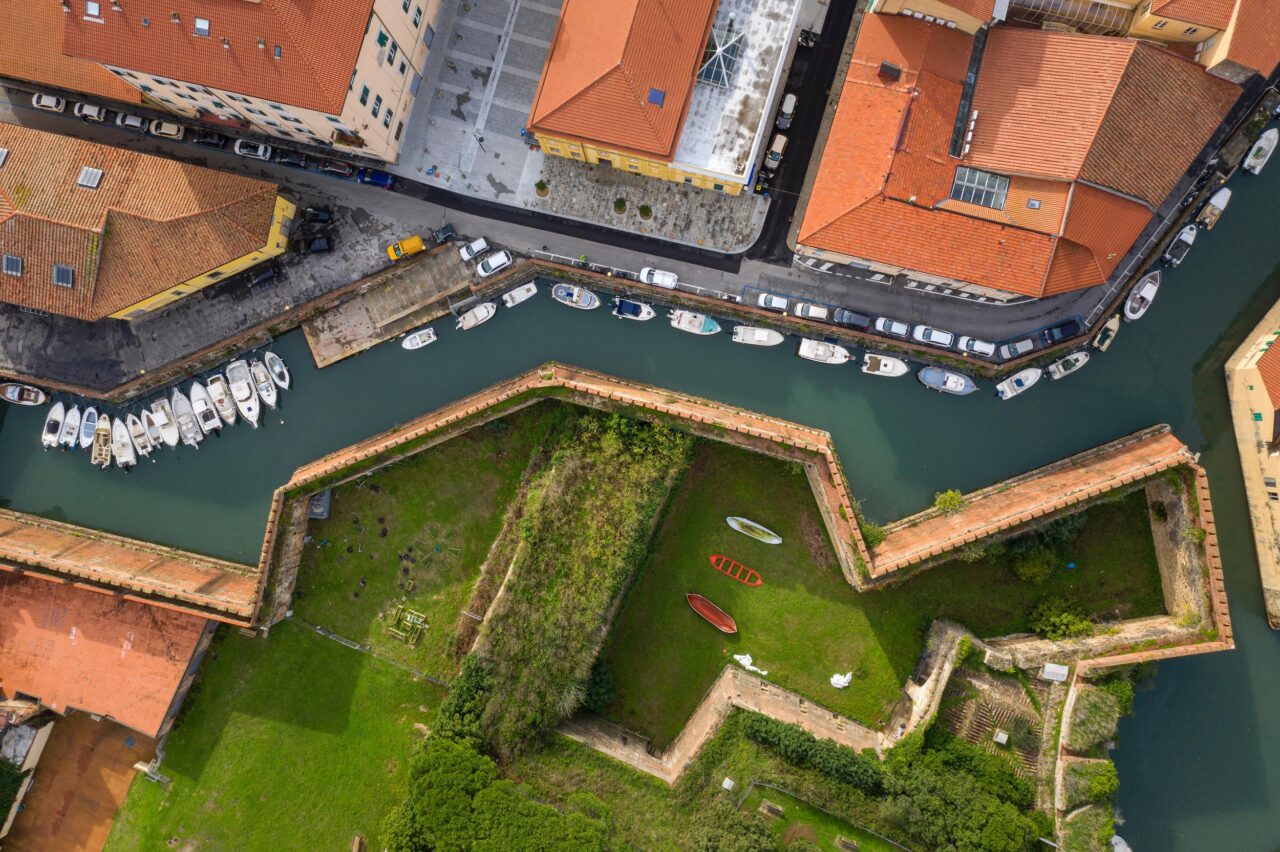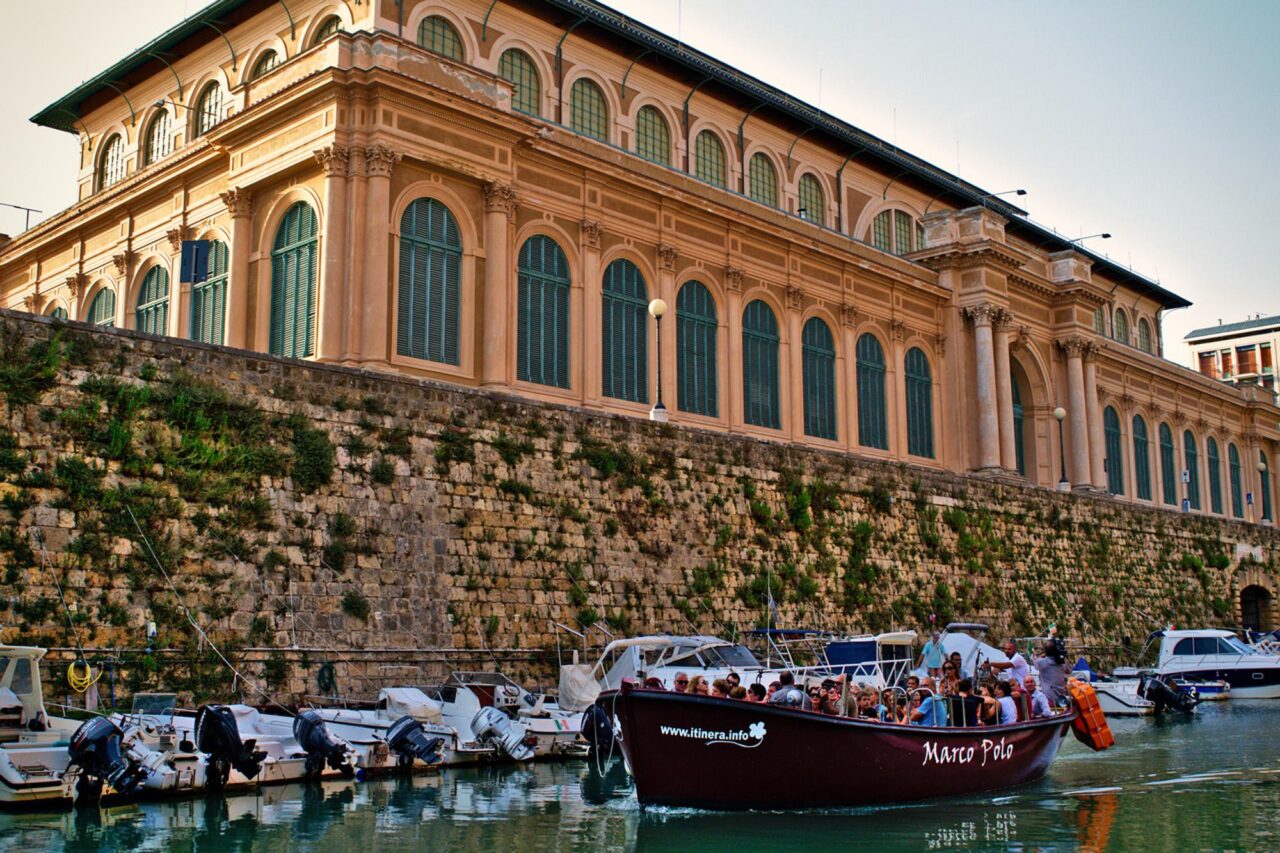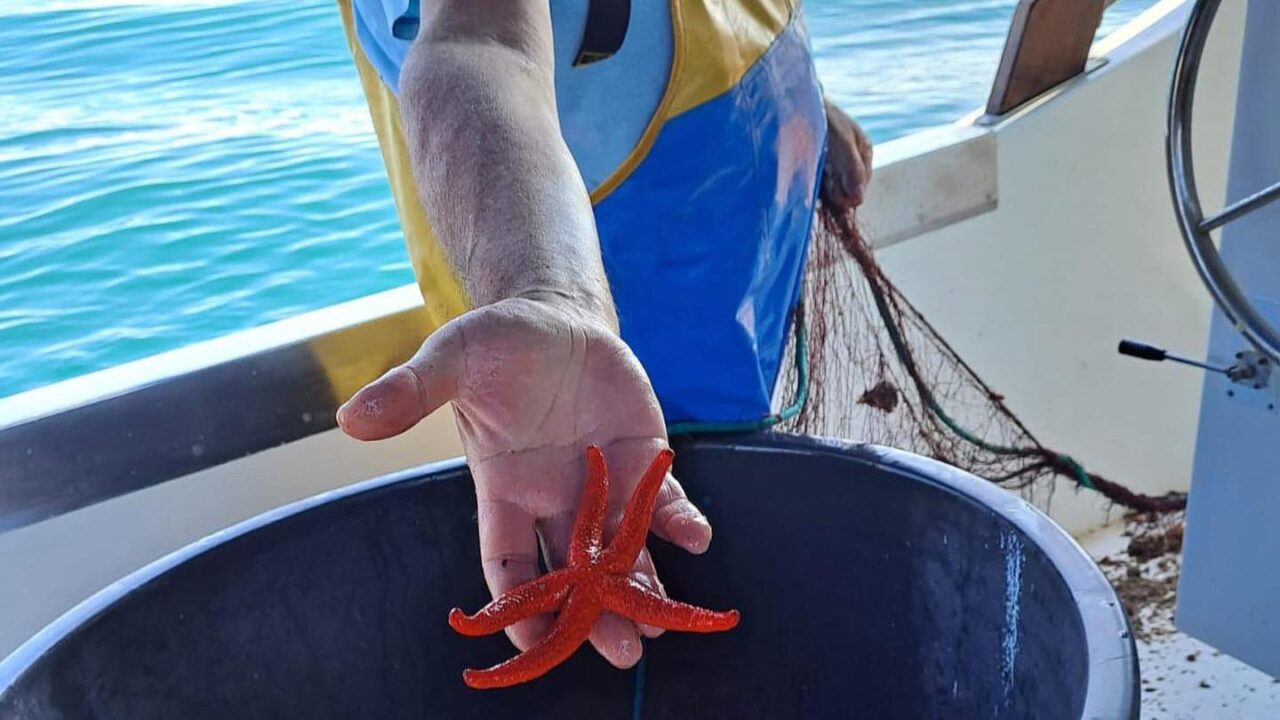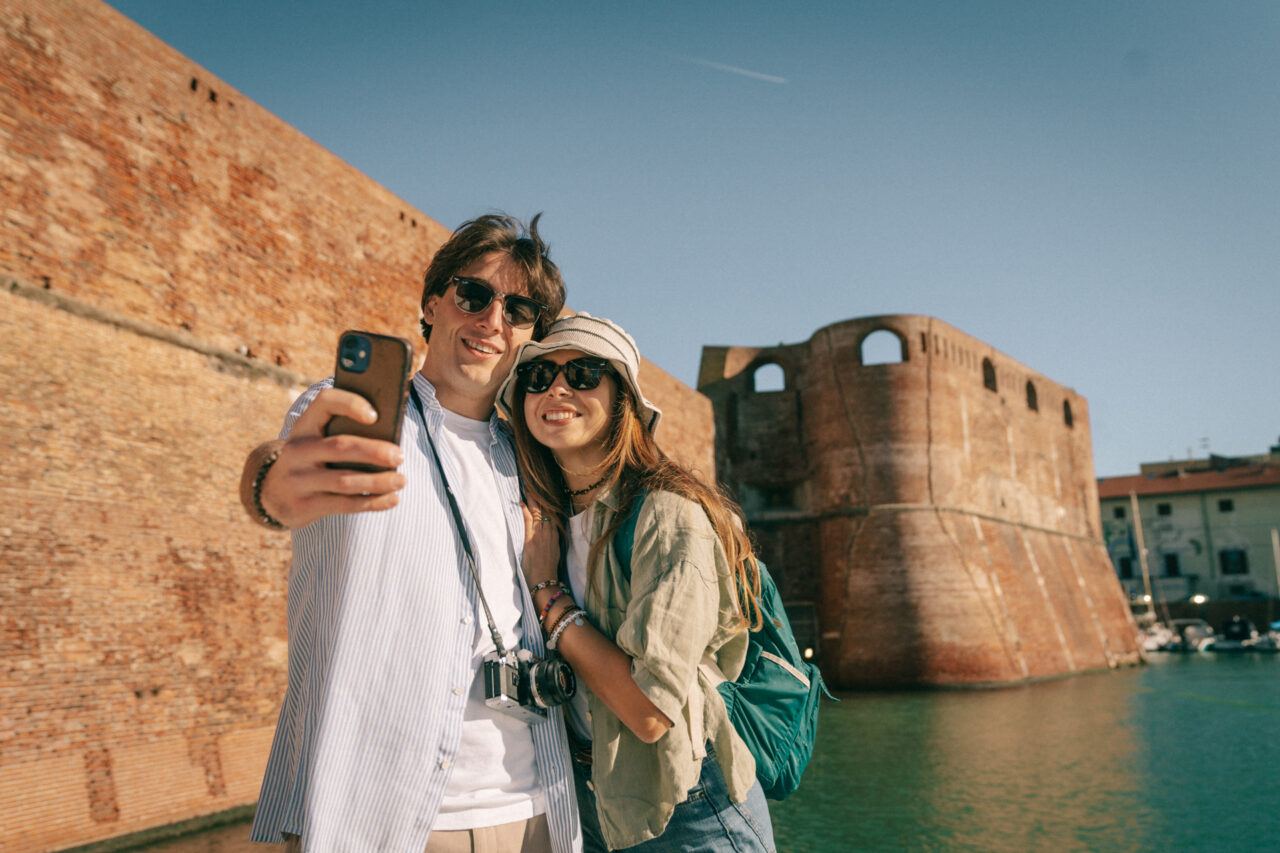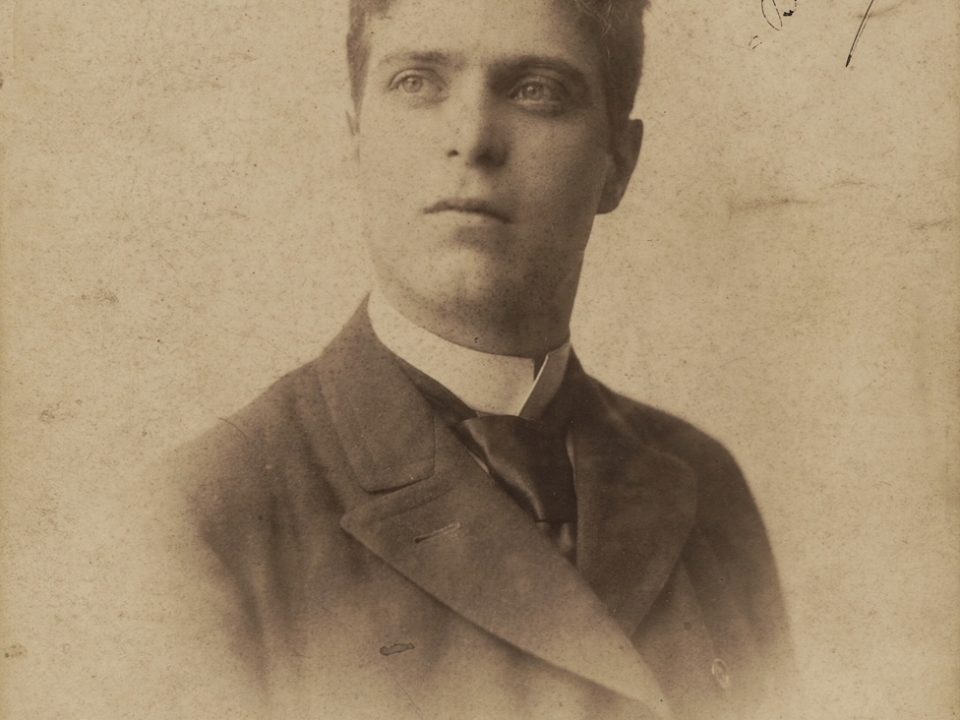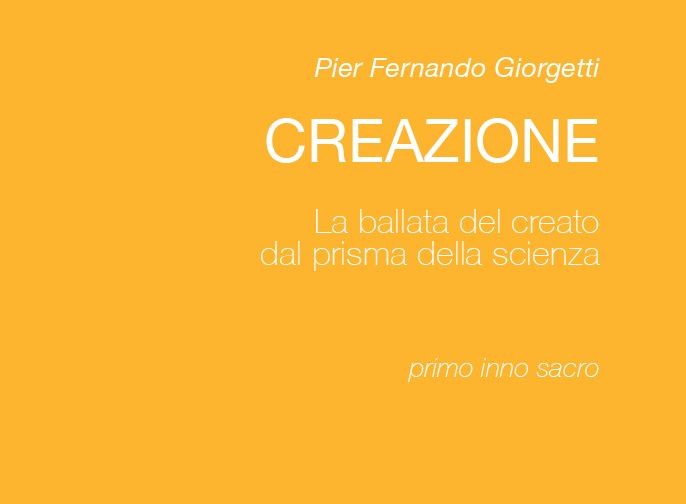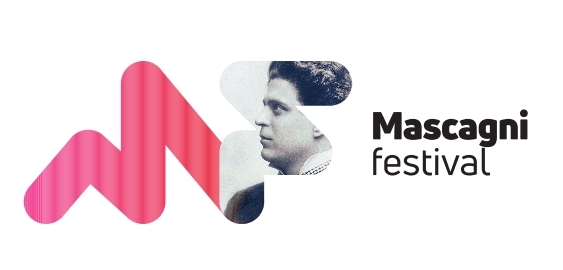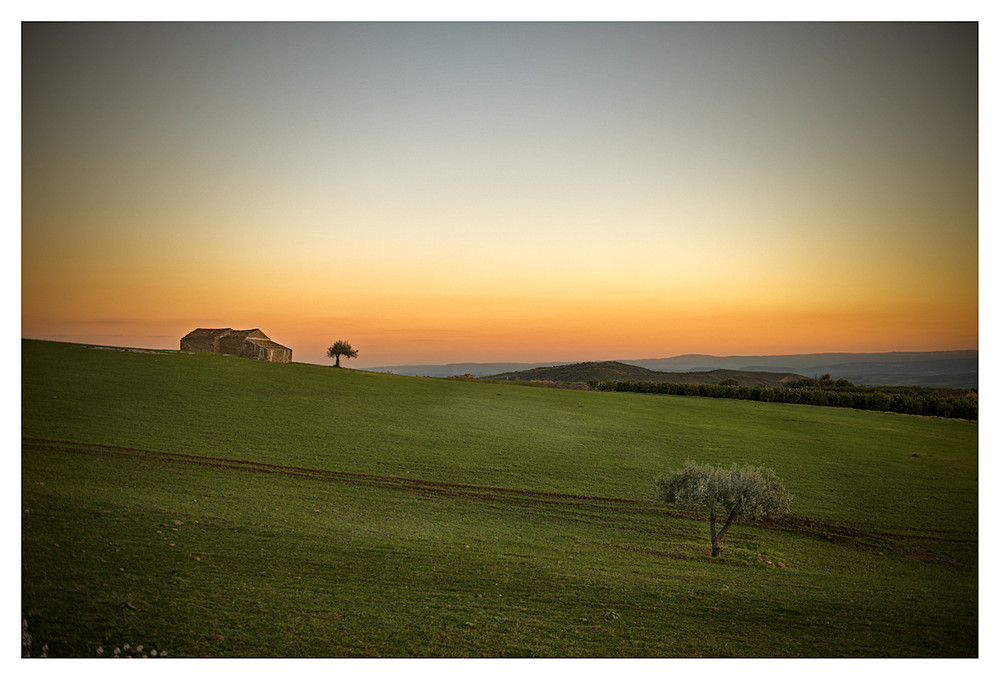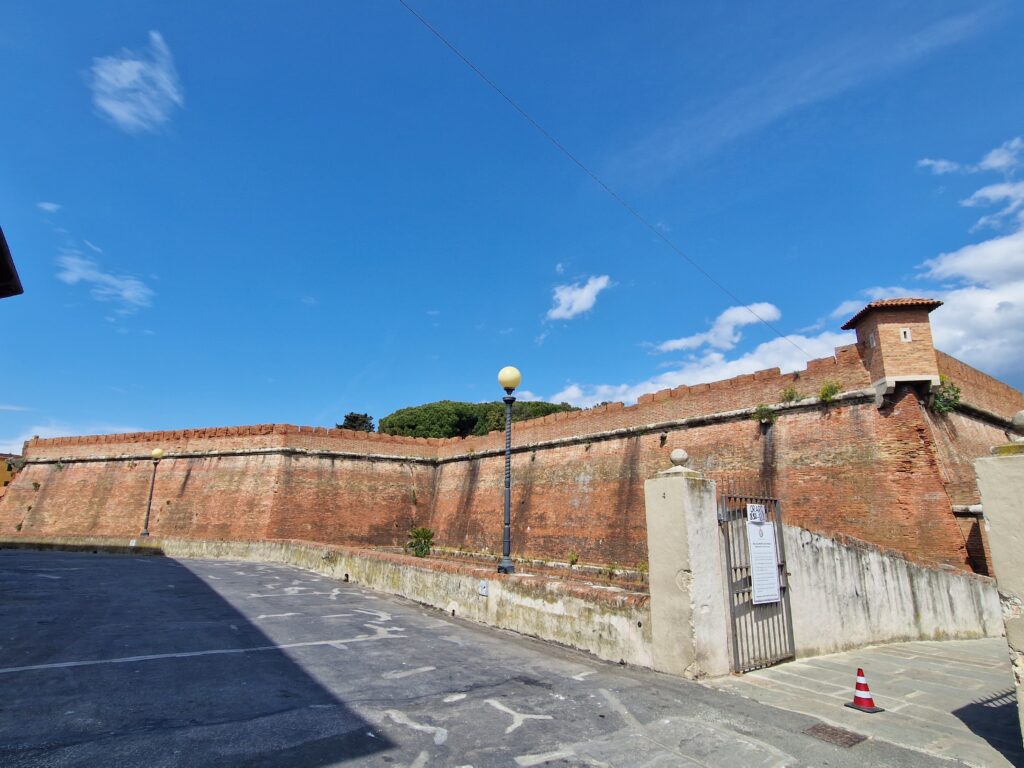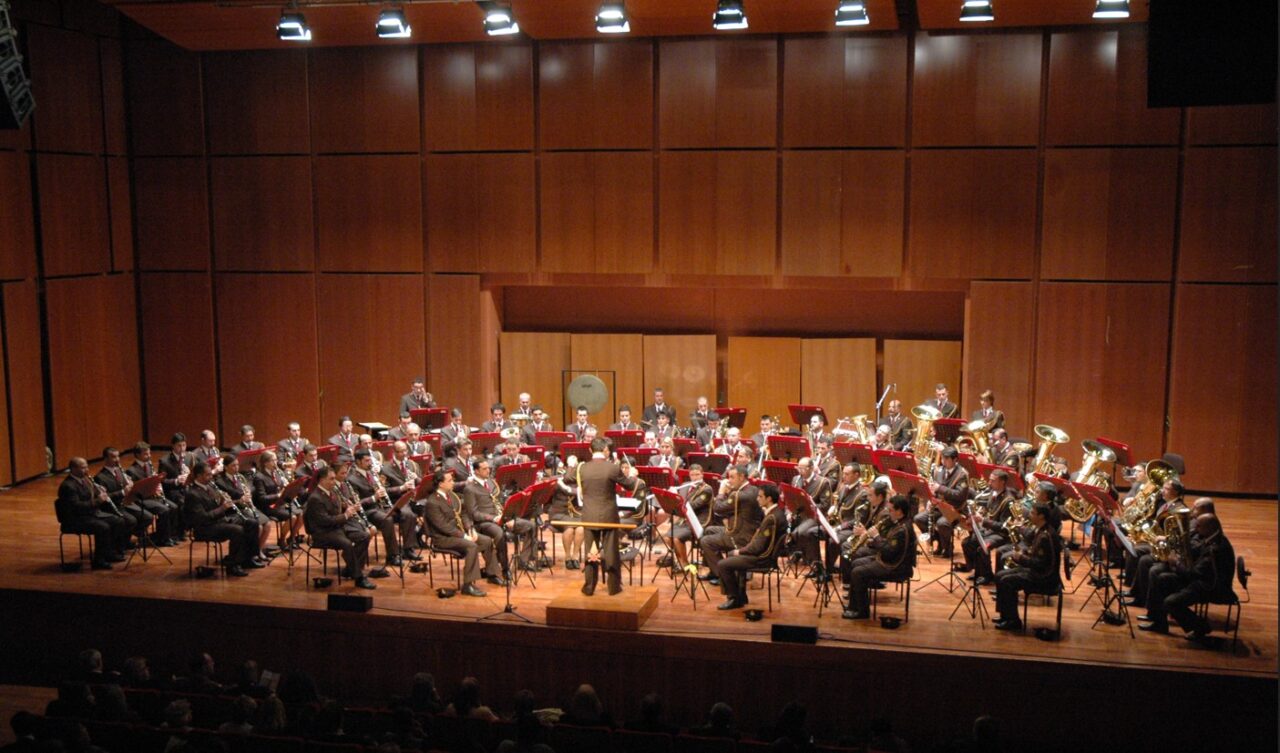Major Lighthouse or Livorno Lighthouse
The port area and the coast of Livorno were once scattered with lighthouses and watchtowers. One of these, perhaps the most important, can be discovered behind the new waterfront of Porta a Mare, inside the Benetti Shipyards, where some of Italy’s most luxurious superyachts are built.
We are talking about the Livorno Lighthouse, also known as the Major Lighthouse or Livorno Lighthouse. This tall and elegant structure, with its simple shapes, represents not only one of the most significant monuments in Livorno’s maritime history but also one of the most beautiful and oldest lighthouses in Italy. A masterpiece commissioned by the Maritime Republic of Pisa, which, after the disastrous defeat against the Genoese in the Battle of Meloria in 1284, wanted to send a message of rebirth by erecting a new, taller, and more majestic lighthouse in Livorno, surpassing the one destroyed during the conflict.
Since 2019, thanks to an extensive restoration and rehabilitation process, the Livorno Lighthouse has been reopened to the public for visits. An experience not to be missed, which, through a spiral concrete staircase with 297 steps, will take you to the base of the upper dome and finally to the lantern: one of the most magical places to admire the splendid panorama of the city and the sea horizon of Livorno.
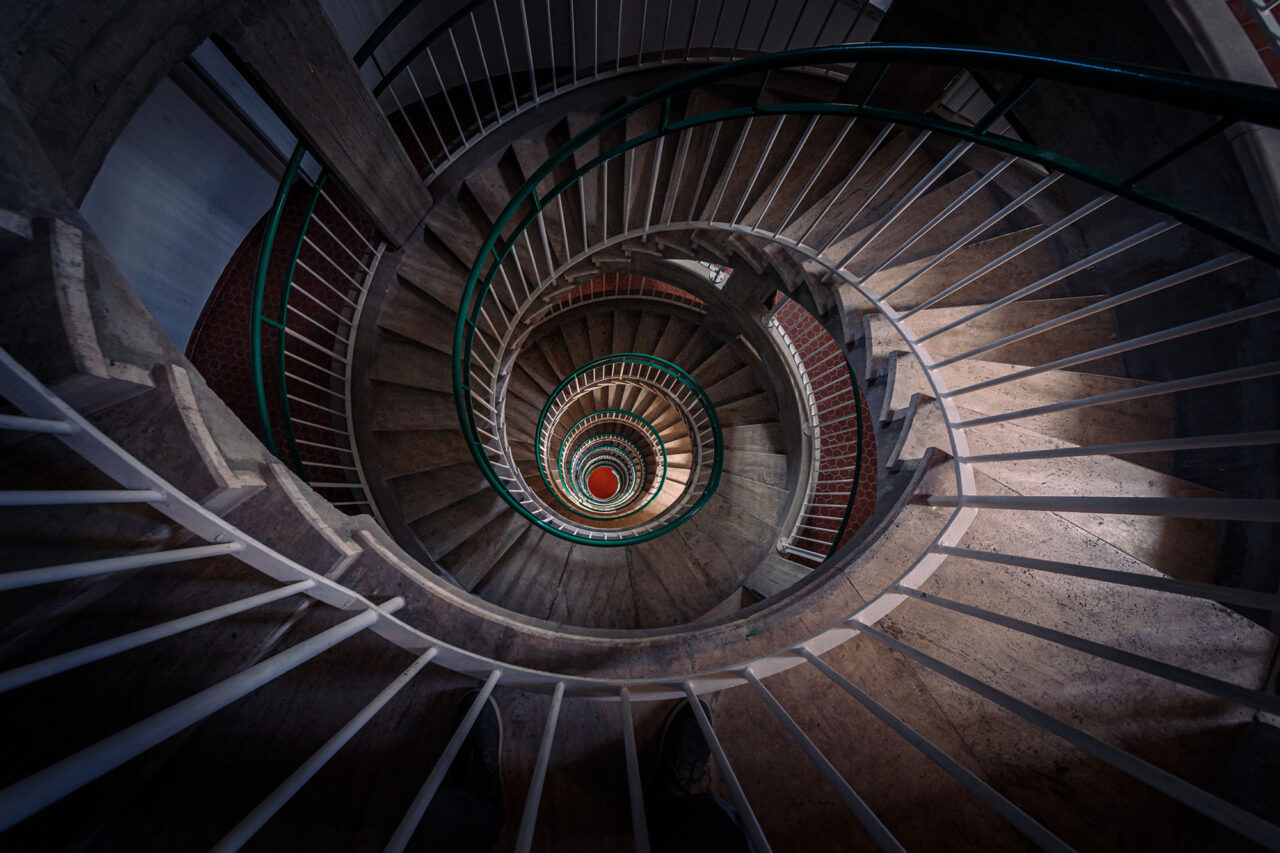
The work of Giovanni Pisano
The Beacon of the Pisani, this was its original name, was created between 1303 and 1305 according to the design of the famous architect and sculptor Giovanni Pisano, who effectively designed a work so important that it was considered, from the very beginning, as a lofty expression of human architectural genius.
In this regard, there is no shortage of authoritative quotes. Dante Alighieri, in the fifth canto of the Purgatory of the Divine Comedy, mentions the Beacon of Livorno with these words: “It stands firm like a tower that does not collapse – never does its summit surrender to the blowing winds.” Francesco Petrarca, in his poem “Itinerario Siriaco,” cites it as a “most valid work, from whose top every night the flame indicates to navigators the safest shore.” Gregorio Dati, in his “Florentine Chronicles,” described it as “one of the finest works ever executed by all of humanity,” and even the great astronomer Galileo Galilei would use it as a tower-laboratory for his experiments.
Indeed, Giovanni Pisano designed a structure that was not only beautiful but also very efficient. With its 52 meters in height and its system of braziers, it was clearly visible, even at that time, from a distance of over 10 nautical miles. Two overlapping battlement towers, the first erected on a polygonal base with thirteen sides, the second supporting the lantern, consisted of seven cylinders with slightly decreasing diameters, giving the whole a slender and impressive appearance.
At the base of the tower, the warehouses and accommodations for the staff were located, accessed through a small entrance door above which a Pisan cross was sculpted. This effigy was later replaced by the Florentine lily when Pisa, in 1406, was annexed to the Medici dominions.
As a demonstration of the validity of the initial design, the Beacon of Livorno has not undergone significant changes over the centuries, except for those strictly necessary for its modernization. The only additions were made towards the end of the 1500s by the Medici Grand Dukes, who erected a construction site, some new warehouses, and a quarantine station where crews arriving at the port could be quarantined if necessary.
The lantern, formerly illuminated first with oil lamps and then with pressurized petroleum, in 1841 was replaced with the first Fresnel lenses and with incandescent acetylene gas, and finally electrified at the end of the 1800s. In 1860, after the wars of independence, the Beacon of Livorno became part of the list of Italian lighthouses with the number 1896. Since 1911, it has been managed by the Italian Navy.
The Love of Livorno for its Lighthouse
A silent witness to anyone entering or exiting the port, the Lighthouse of Livorno has illuminated all the most important stages of the city’s history for centuries. This is why the Livornese love it so much and consider it, along with the Old Fortress and the 4 Moors, one of their identity landmarks.
Unfortunately, on July 19, 1944, at the end of World War II, after withstanding centuries of storms and sea squalls, it risked being lost forever. The Germans, fleeing the city to escape the American armies, almost completely destroyed it with a charge of dynamite.
For the Livornese, it was a blow to the heart that added to the destruction of much of the city. When post-war reconstruction began, debris was gradually cleared away everywhere, but not at the Lighthouse. The Livornese people wanted to rebuild their lighthouse. And not just any lighthouse, exactly that one!
To finance the project, a public subscription was launched in the early 1950s, which quickly raised the sum of 2 million lire. The work began in 1954, following Giovanni Pisano’s designs to the letter. The material obtained from the debris, enough to cover 90% of the reconstruction, was integrated with stones excavated from the same quarry of San Giuliano from which the original ones came. In just two years, the Lighthouse of Livorno was reconstructed exactly as it was originally and inaugurated in the presence of the then President of the Republic, Giovanni Gronchi.
The Livornese once again had their beloved lighthouse.
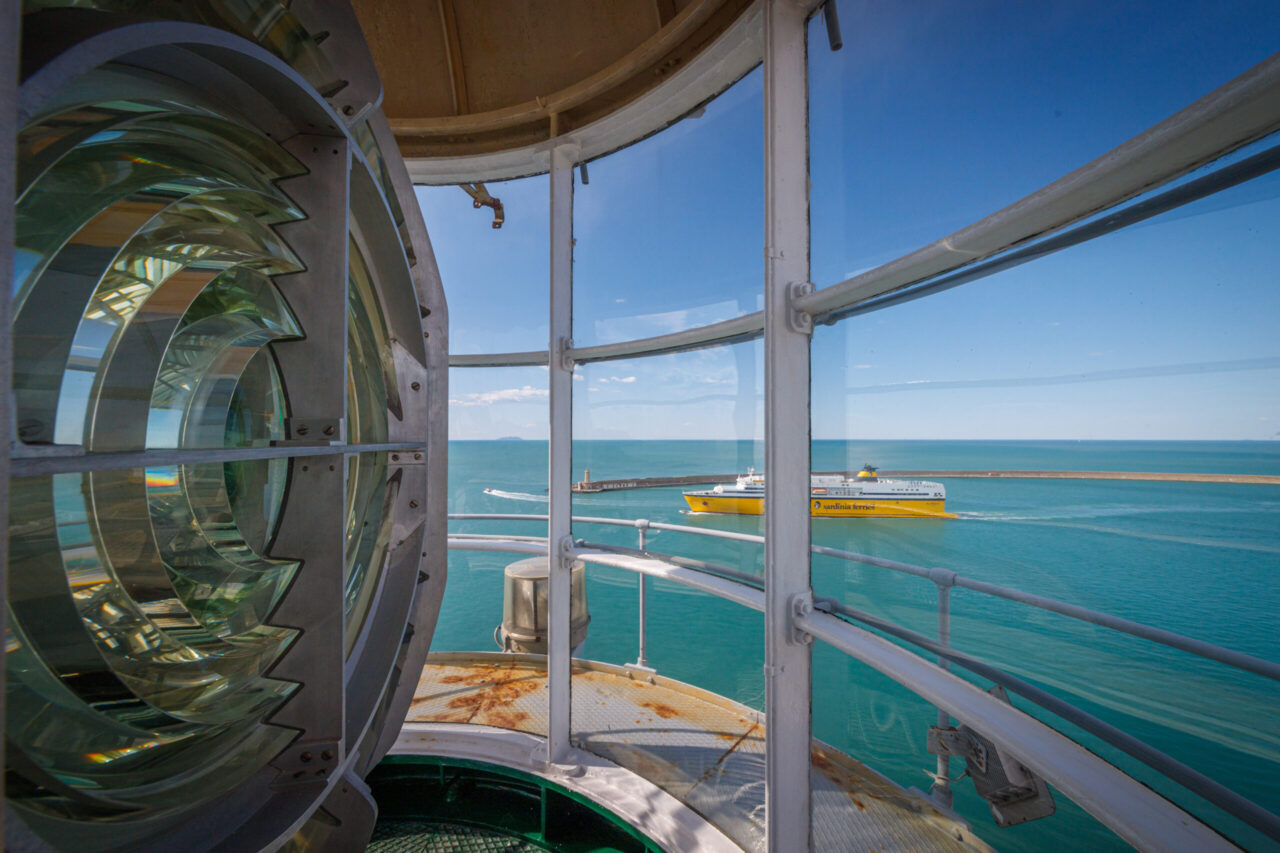
Useful informations
-
Who:
Alone, Children and families, Groups, In pairs, With friends
-
When:
Autumn, Spring, Summer, Winter
-
What:
See learn and discover
-
Other characteristics
Indoors, Outdoors, Without reservation
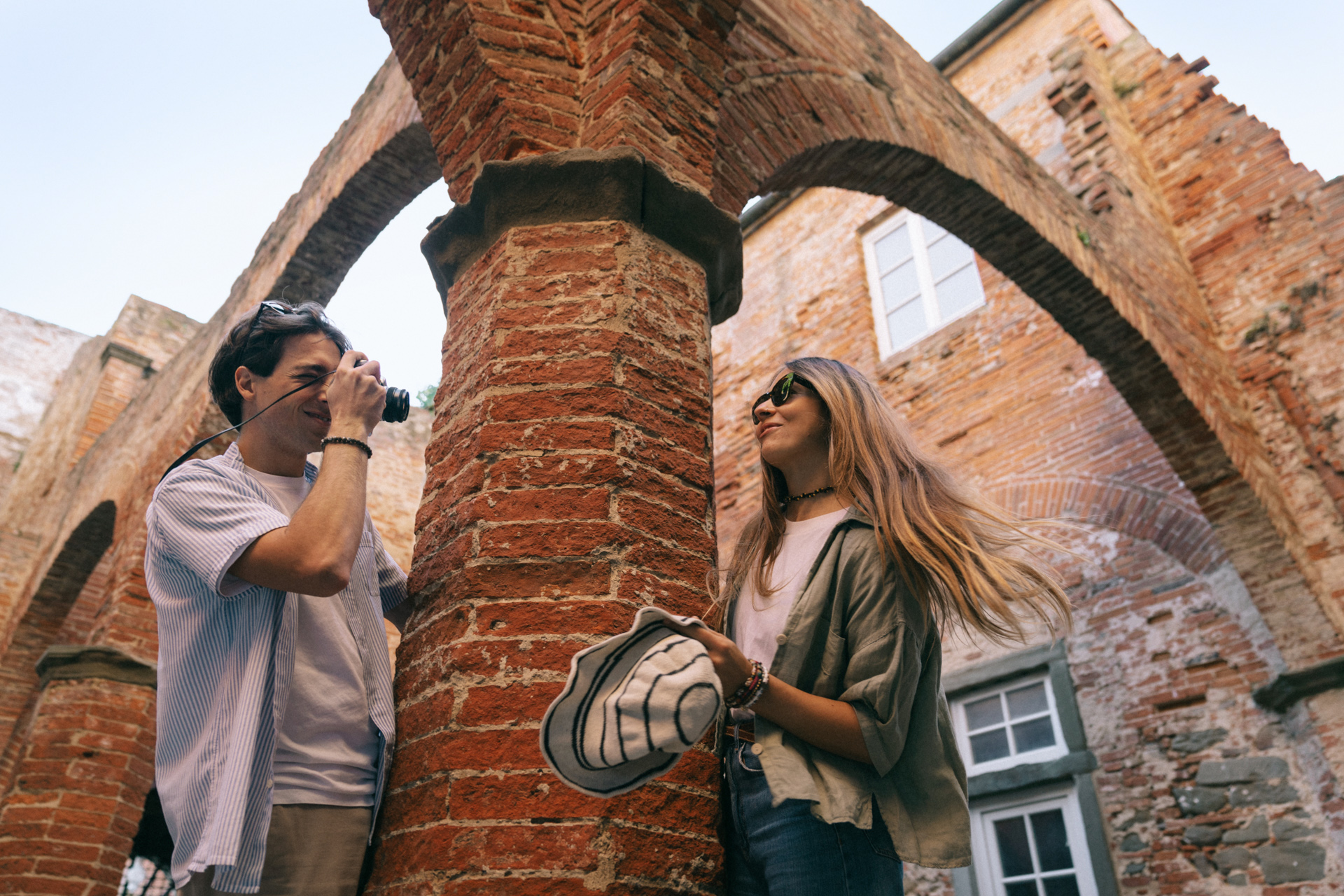
The unexpected Tuscany
Discover all the peculiarities that make Livorno so unique and surprising.
Discover more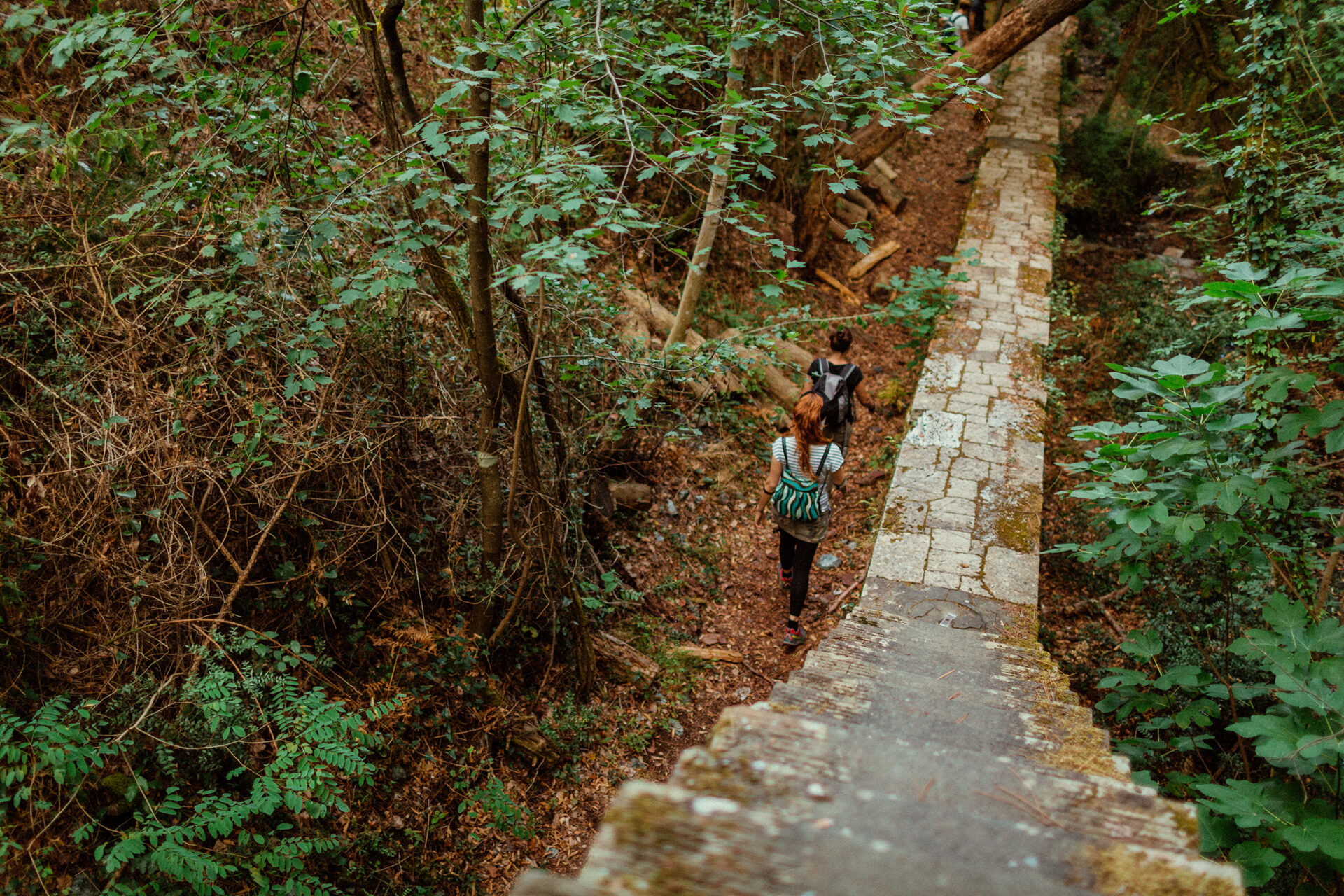
Subscribe to the newsletter
to stay updated
Don't miss any news about events in Livorno and surroundings.
